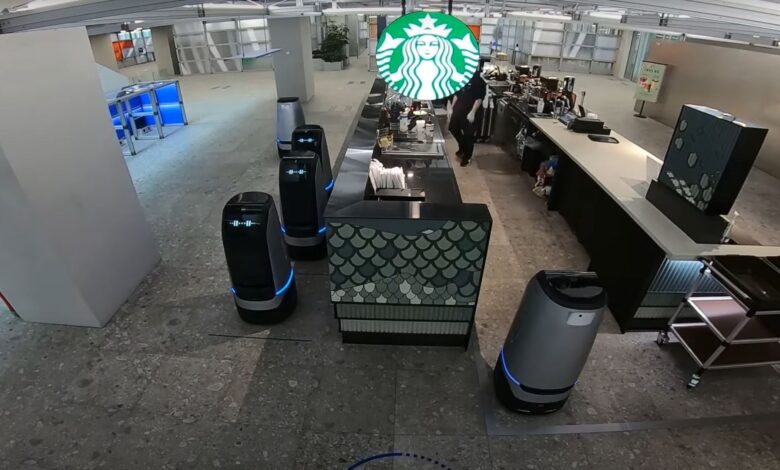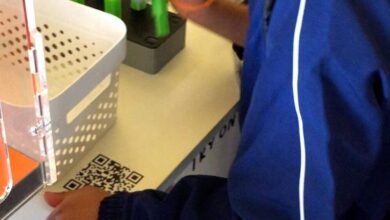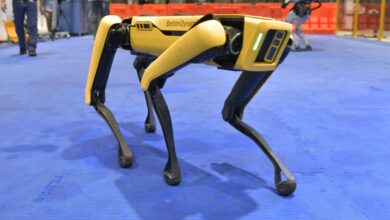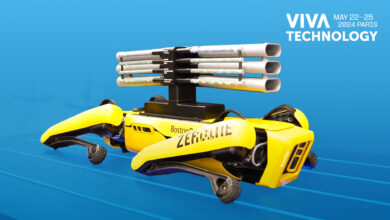World’s only Starbucks where 100 service robots fulfill orders

Imagine a unique Starbucks that features about 100 robots serving orders for customers.
This happens for real, day in and day out, at Naver 1784 tower, the world’s largest robotics testbed, and also the headquarters of South Korean technology firm Naver.
The numerical digit 1784 signifies the site’s lot number address, 178-4, and also the year marking the beginning of the first industrial revolution.
The tower is a proving ground for the company’s advancements in robotics, artificial intelligence, and cloud services, showcasing Naver’s dedication to transforming ideas into tangible solutions.
According to Naver, 1784 redesigns how we live and work and claims that its “advanced technologies are embedded into the building to provide a better work environment, bringing us one step closer to the future,” according to the firm’s website.
Smart robots in action at Naver’s Starbucks
Opened in 2022 in Seongnam, South Korea, the Naver 1784 Tower exemplifies the tech giant’s concept of a “tech convergence building.”
Naver’s autonomous service robot, Rookie, serves as bearer at Starbucks and other services in the 36-storey building on the southern outskirts of Seoul.
On a regular day, approximately 100 Rookie service bots move around all floors of NAVER 1784, delivering packages, coffee, and lunch boxes.
Rookie is a self-driving brainless robot cloud-based robot, a technology being promoted by Naver for its range of service bots. Such robots work on a platform called AI, Robot, and Cloud (ARC), a multi-robot intelligence system based on Naver Cloud and a 5G network.
The wheeled Rookie has a compartment for storing food, drinks, or other items that can be transported to the desired location. Rookie is compatible with Naver’s Roboport, a dedicated robot elevator that makes access to different floors possible and quicker.
Assisting Rookie in carrying out tasks is Ambidex, a dual-armed robot featuring innovative force transfer mechanisms that ensure safe interactions with people at Starbucks. Designed for precision and speed, it can also handle high-payload tasks thanks to its unique cable-driven structure.
“It is amazing that so many robots are providing services non-stop in such a huge space. In 1784, daily service becomes daily testing, and each day’s issues become the next day’s updates,” said a post on the company website.
Cloud-powered robot intelligence
Naver has focused its robot research efforts on three main domains. The popularization of service robots, the natural interaction between humans and robots, and artificial intelligence for robots.
The platform uses high-precision data and pioneering algorithms to facilitate the seamless coexistence of humans and robots. According to Naver, many robots can simultaneously become smart through an ultra-low latency network connecting them to ARC.
The ARC eye provides precise indoor navigation where GPS fails, while the ARC brain handles planning and processing for robot movement and tasks. Furthermore, it manages online and offline environments in real-time by connecting to the required space or service infrastructure. This is a breakthrough system that is expected to make service robots mainstream.
The ability to simultaneously control multiple robots through cloud computing reduces production and maintenance costs by exploiting high-performance cloud computers that manage several robots together at the same time.
Moreover, moving powerful processing power out of the robot leads to lower energy consumption. As a result, high-performance and highly accurate controls are made possible regardless of the robot’s size.
ABOUT THE EDITOR
Jijo Malayil Jijo is an automotive and business journalist based in India. Armed with a BA in History (Honors) from St. Stephen’s College, Delhi University, and a PG diploma in Journalism from the Indian Institute of Mass Communication, Delhi, he has worked for news agencies, national newspapers, and automotive magazines. In his spare time, he likes to go off-roading, engage in political discourse, travel, and teach languages.



